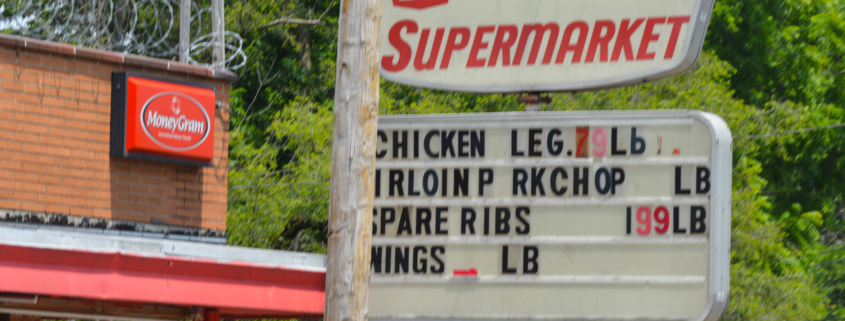A Bridge West
I am often surprised by how many people have heard of my hometown of Dayton, Ohio. Dayton once had a major role in innovation and the arts. The city lays claim to both the Wright Brothers and Paul Laurence Dunbar. Funk music was arguably birthed in West Dayton. Major companies like Mead, Reynolds and Reynolds, and NCR once nurtured the working class families that built the Black suburbs that lay fallen today.
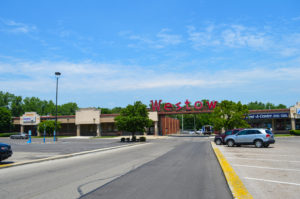 I live in West Dayton, which is primarily populated by African Americans. Twenty years ago it thrived with upper middle class families, businesses, and entertainment. While those businesses have been boarded up and torn down since the closing of GM plants and factories, the people still remain and emanate an enviable joy.
I live in West Dayton, which is primarily populated by African Americans. Twenty years ago it thrived with upper middle class families, businesses, and entertainment. While those businesses have been boarded up and torn down since the closing of GM plants and factories, the people still remain and emanate an enviable joy.
In fact, when I drive down Third Street and see the promise of new business development in an area that was destroyed over fifty years ago in the 1966 West Dayton riots; when I watch children splash in the colorful sprinklers at Mallory Park; when I drive home to my little township and have to slow down to allow a black man riding an enormous shiny black horse safe passage, I find it easy to look past the vacant lots with overgrown brush, the concrete blocks where factories once stood, the buildings that mark in my memory just how often corporate superstores erect structures and then move on for higher ground.
I work downtown, and when I drive over the Third Street Bridge, also known as the Peace Bridge, and watch the couples in their canoes or glance at the joggers who run along the Great Miami Rivers’ edge, I wonder what they see when they look at the gas stations and broken windowed structures that welcome them to my side of town. Do they see the isolation? Do they see the endurance?
One day soon that bridge will be replaced and I wonder if the attitude about West Dayton will change with it? In the Dayton Daily News article entitled “Artist ‘Bing’ Davis to Help Design Third Street Bridge,” local artist Willis “Bing” Davis is quoted as saying, “The intent is to create a distinctive-looking bridge that is a source of public pride and ‘a lasting symbol of hope’…” The article goes on to say that, “It’s symbolic for many, too, because it connects the city’s east and west sides.”
 I realize that to some, West Dayton is a frightening place. I’m not afraid. I think I owe my stepfather for that. While he’s not black (he’s a Lakota Sioux), he lived most of his life in West Dayton and embraced the culture. (Well, embraced might be a strong word. When I was in high school and the neighborhood boys pulled up beside our emerald green station wagon blasting Tupac or Bone-Thugs-in-Harmony, he turned up the volume on one of his traditional Sioux drum songs, much to my embarrassment.) However, when I was thirteen, maybe fourteen, I needed to make a purchase at corner store. We were near a market I wasn’t familiar with and was concerned. There were bars on the windows and faded ads on the walls and I didn’t want to go inside, but my stepfather made me. He said, “Don’t ever be afraid of your own people.”
I realize that to some, West Dayton is a frightening place. I’m not afraid. I think I owe my stepfather for that. While he’s not black (he’s a Lakota Sioux), he lived most of his life in West Dayton and embraced the culture. (Well, embraced might be a strong word. When I was in high school and the neighborhood boys pulled up beside our emerald green station wagon blasting Tupac or Bone-Thugs-in-Harmony, he turned up the volume on one of his traditional Sioux drum songs, much to my embarrassment.) However, when I was thirteen, maybe fourteen, I needed to make a purchase at corner store. We were near a market I wasn’t familiar with and was concerned. There were bars on the windows and faded ads on the walls and I didn’t want to go inside, but my stepfather made me. He said, “Don’t ever be afraid of your own people.”
It wasn’t until I moved back to the city after living in Yellow Springs, Ohio, that I realized there are some, both black and white, who see the entire West Side as I saw that corner store, something to be leery about and ashamed of, as if not being affluent is an embarrassment, is criminal.
In recent months West Dayton was declared a food desert. Dayton Public Schools announced school closures and one of the last remaining hospitals on the West Side, Good Samaritan Hospital, announced that it would soon be closing its doors for good. Meanwhile, directly across the bridge, in downtown Dayton, developers are building a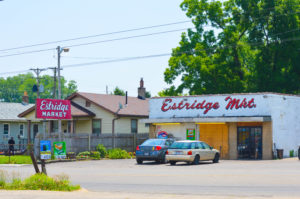 new outdoor music arena, touting river development, and building so many new condos they seem to sprout up like weeds.
new outdoor music arena, touting river development, and building so many new condos they seem to sprout up like weeds.
I attend church in West Dayton and during the Wednesday night Bible study following Trump’s election, my pastor announced to the congregation that we would have to learn to take care of one another. He said that any help we’d once known would soon be gone. Less than two years later, in one fell swoop, our access to healthy foods, medical care and public education nearly disappeared. We know that our physical health is connected to food, education and medical care. That fact is undeniable and the roll back of all three in this community feels conspiratorial. But on top of that we’ll soon have to pray for the miracle of divine healing because as the opioid epidemic tramples the community like a storm, sufferers who live too far from local hospitals will need a literal miracle to survive the transport.
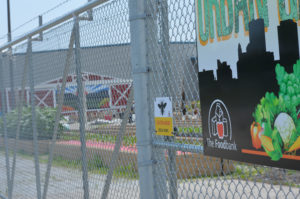 It offends me that while people starve in West Dayton, right across the bridge half million dollar condominiums reach for the horizon. We watch from the Peace bridge as it happens. Why is it that we on this side of the bridge have to figure out how to feed and heal ourselves, while on the other side major grocery chains are building, remodeling, and expanding? It was recently announced that a food co-op will open in the coming years, but why does it have to come to that? Why does it feel as though the West Side is being abandoned while the rest of the city thrives?
It offends me that while people starve in West Dayton, right across the bridge half million dollar condominiums reach for the horizon. We watch from the Peace bridge as it happens. Why is it that we on this side of the bridge have to figure out how to feed and heal ourselves, while on the other side major grocery chains are building, remodeling, and expanding? It was recently announced that a food co-op will open in the coming years, but why does it have to come to that? Why does it feel as though the West Side is being abandoned while the rest of the city thrives?
I am not a business owner or a community leader. I’m a writer who has questions and no answers. Though writing gives voice to the issue, I’m not sure it’s enough. I can’t even protest because I’m not sure what I would be protesting. Who would I be protesting: businesses for turning away Black dollars; the North, South and East Sides that develop and grow because of university expansion, medical field expansion and the survival of some parts of the middle class? To whom do I express my frustrations while knowing it won’t erase the isolation that nearly fifty eight thousand people face when they, by no fault of their own, are sequestered to a lifestyle of lack because they can’t afford to move to the other side of the Peace Bridge? Who is at fault? And more importantly, what can I do to stop it?
All photography by Latoya Leonard.
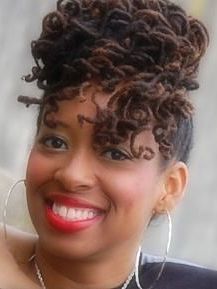 Jahzerah Brooks is a mother, writer and MFA candidate at Antioch University Los Angeles. She currently lives in the Midwest. Jahzerah currently serves as Lead Fiction Editor for Lunch Ticket.
Jahzerah Brooks is a mother, writer and MFA candidate at Antioch University Los Angeles. She currently lives in the Midwest. Jahzerah currently serves as Lead Fiction Editor for Lunch Ticket.

